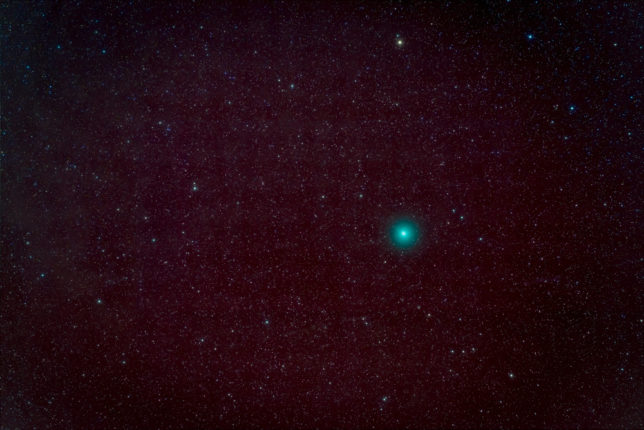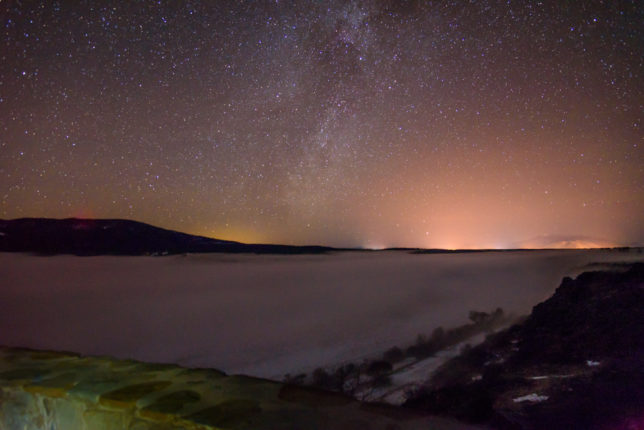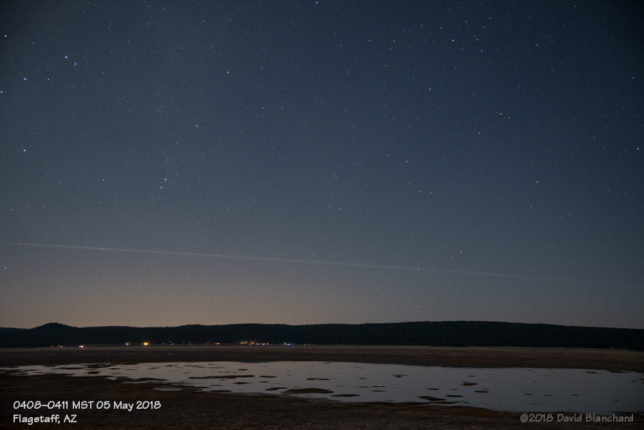I went out to the Mormon Lake Overlook early last evening (12/08/2018) to photograph a couple of different events. First was the launch of the ULA Delta IV-Heavy NROL-71 mission from Vandenburg Air Force Base. After that, I planned on pointing the camera up towards Comet 46P/Wirtanen.

Only part of my plans worked out. The launch was scrubbed at T-7 seconds but I didn’t know about that until much later. I just kept shooting a series of 15-second exposures pointed towards the western horizon and hoping that I would capture it. No launch—and there was nothing to capture.
But, wait, not so fast! It turns out there was a shallow layer of fog in the Mormon Lake basin and the series of 15-second exposures over a period of about 10 minutes resulted in a nice time-lapse movie of the fog. Unfortunately, the camera was pointed at mostly sky with very little of the ground but I’m happy with the lucky result.

For the third act, I pointed the camera back down and over the lake basin towards Flagstaff. The fog was dissipating at this time but still shows up well. What also shows up is the large amount of light pollution in Flagstaff. Flagstaff is the worlds First International Dark Sky City but it takes a lot of work to keep the skies dark. I fear we may be losing the battle.
